Salamanders are interesting amphibians that take on different forms. The axolotl undergoes an incomplete metamorphosis and remains aquatic as an adult, but the fire salamander is a poisonous creature that hides in rotted logs and found its way into some cultures’ mythology. The many different species of salamanders are unique yet still somewhat mysterious. That’s why we’re going to tell you about 10 incredible salamander facts that will help you get to know them. Learn why these creatures are so cool that they’re continually studied and kept as pets!
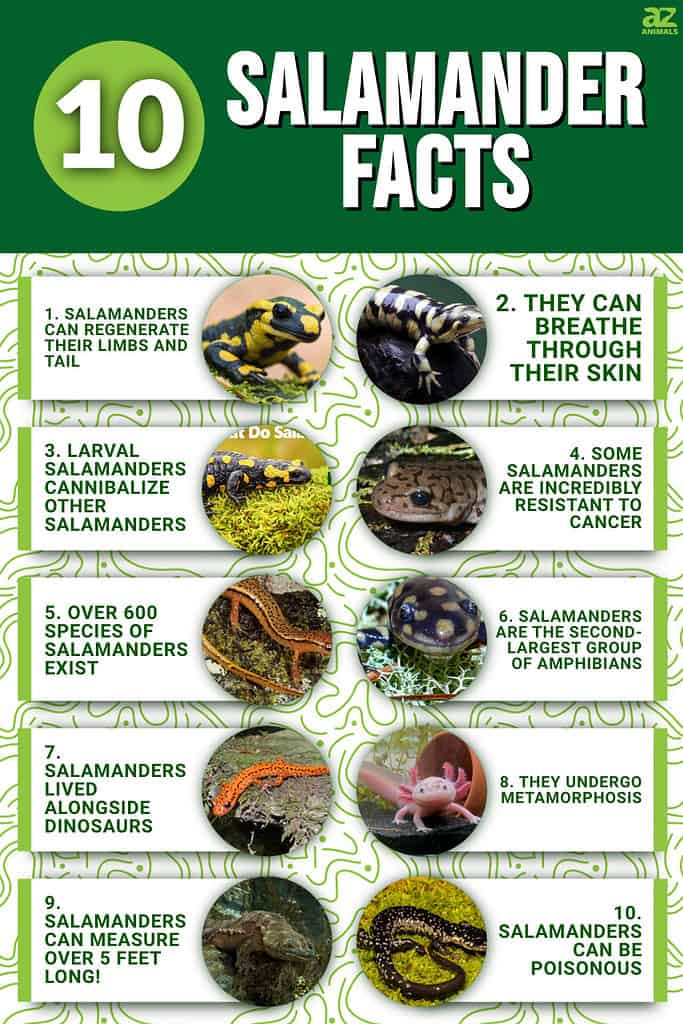
10. Salamanders Can Be Poisonous
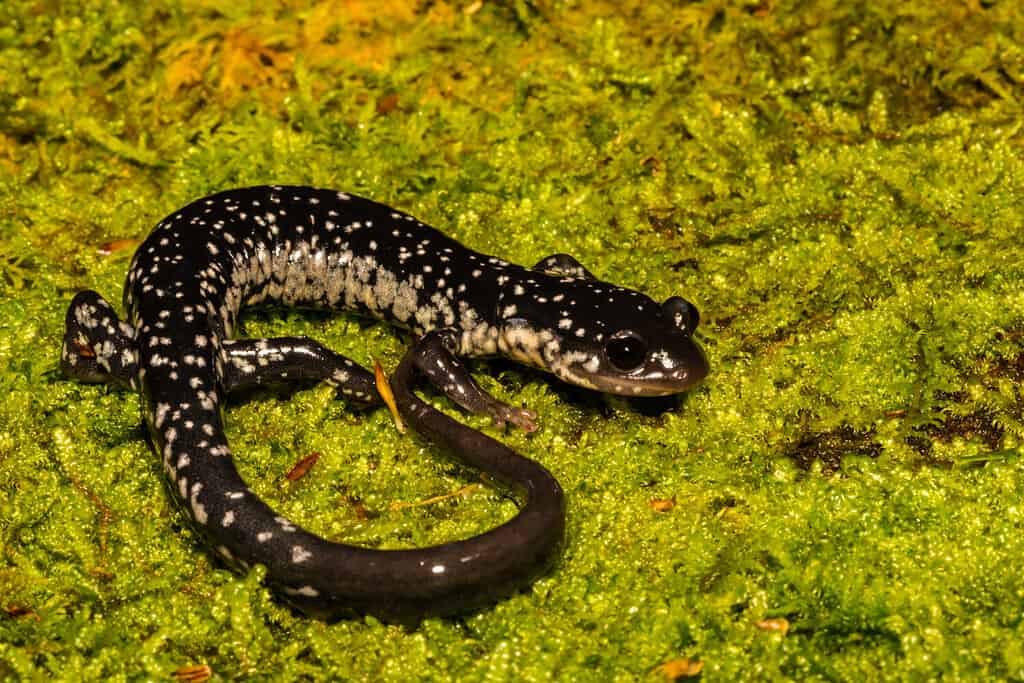
The Northern slimy salamander is a poisonous variety.
©Jay Ondreicka/Shutterstock.com
Although they tend to be small and don’t have much in the way of fighting power, you don’t want to eat a salamander. Some species of salamanders are incredibly poisonous, even though they can’t introduce that venom to others through bites.
In other words, it is best to leave these creatures alone. Also, it’s a good idea to keep any of your pets from eating these amphibians because they can become ill and perish.
9. Salamanders Can Measure Over 5 Feet Long!
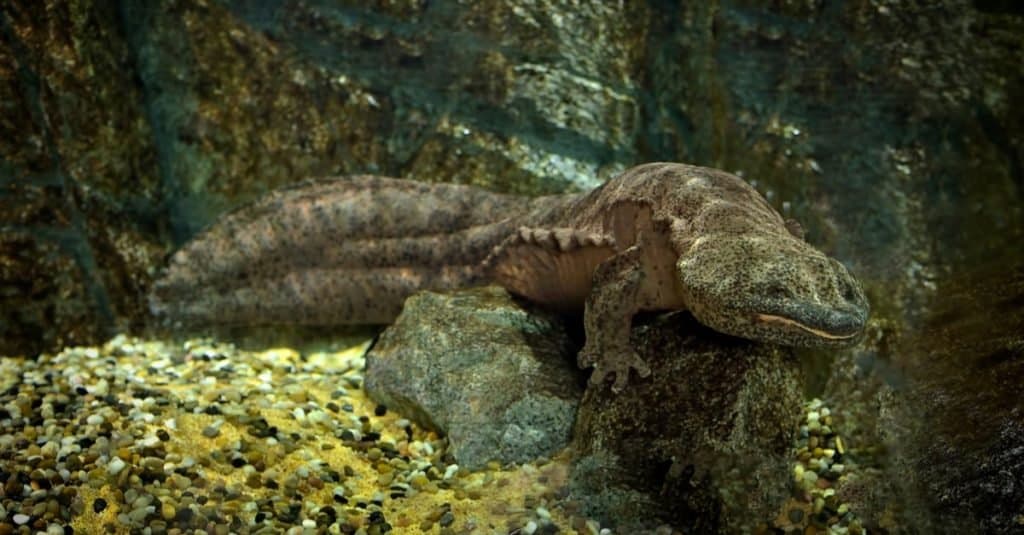
The Chinese
giant salamander
is the biggest salamander alive today.
©tristan tan/Shutterstock.com
Although some of the smallest salamanders in the world are just two inches long, the largest ones can grow over five feet in length! The largest salamander in the world, the Chinese giant salamander, can measure up to 5.9 feet long and weigh up to 130 pounds. However, these are critically endangered species.
8. They Undergo Metamorphosis
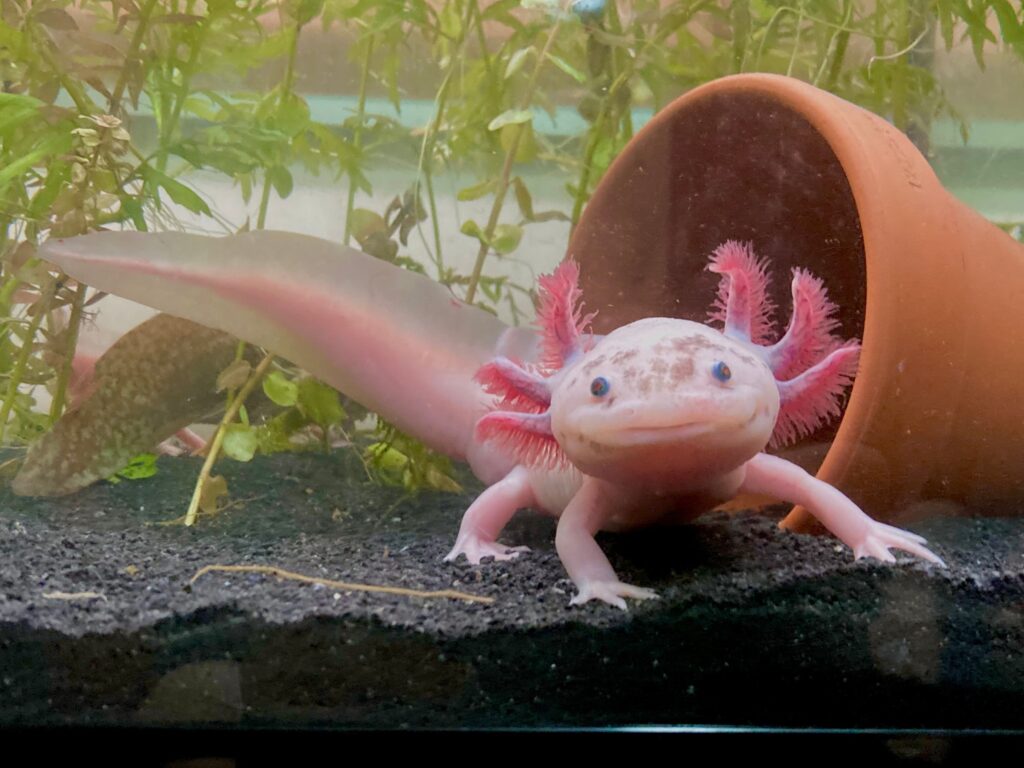
Some salamanders like the axolotl do not undergo complete metamorphosis, remaining in a permanent state of adolescence.
©axolotlowner/Shutterstock.com
Salamanders are typical of most amphibians in that they undergo a metamorphosis that changes them from their juvenile into adult form. It’s common for these creatures to lose their gills during metamorphosis.
However, some species do not undergo a complete transformation. For example, the axolotl keeps its gills and is stuck in permanent adolescence. This is not something that commonly happens in the species, but with so many different species, some outliers are bound to emerge.
7. Salamanders Lived Alongside Dinosaurs

Salamanders lived in the Jurassic Age when dinosaurs roamed the planet.
©Hargle / CC BY-SA 3.0 – License
According to fossil records, salamanders have been discovered dating back about 164 million years ago. That puts them firmly in the Jurassic age, so they got to live alongside dinosaurs and survived the impact event, which put an end to the giant creatures.
Fossils of an even earlier “stem salamander” were discovered in 2020, dating back to 230 million years ago. That’s right around the beginning of dinosaur life on Earth, and it makes the salamander an incredibly long-lived species.
6. Salamanders Are the Second-Largest Group of Amphibians
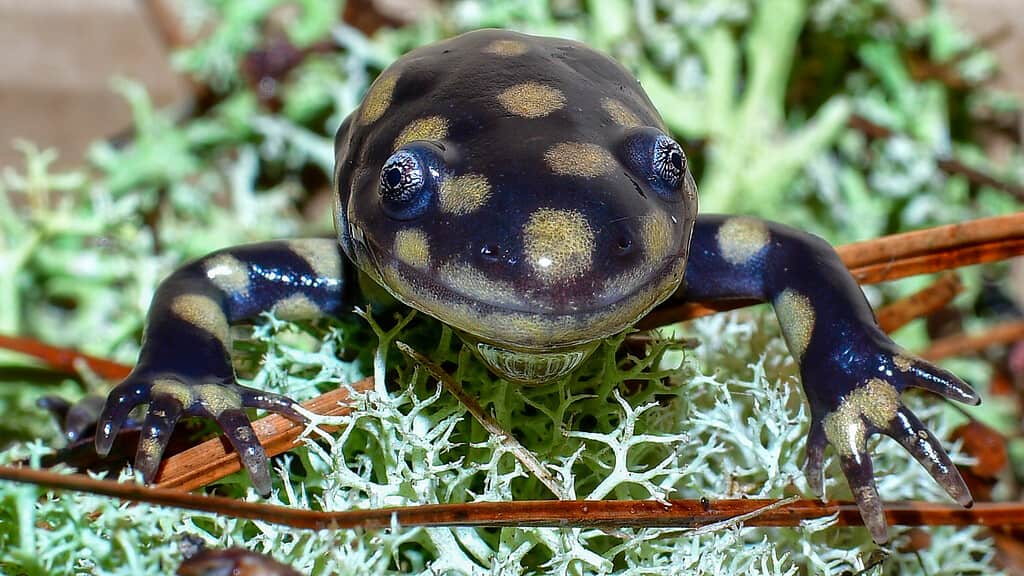
Salamanders are only second to frogs in the largest groups of amphibians.
©Chase D’animulls/Shutterstock.com
Generally speaking, there are three orders of amphibians: Anura, Caudata, and Gymnophiona. Salamanders are part of the Caudata group and frogs occupy the Anura order. The Anura order is the biggest group of them all, and the Caudata group is the second largest. Salamanders are not alone in the group, though. They also have newts and other animals, including over 764 species within nine different families.
5. Over 600 Species of Salamanders Exist
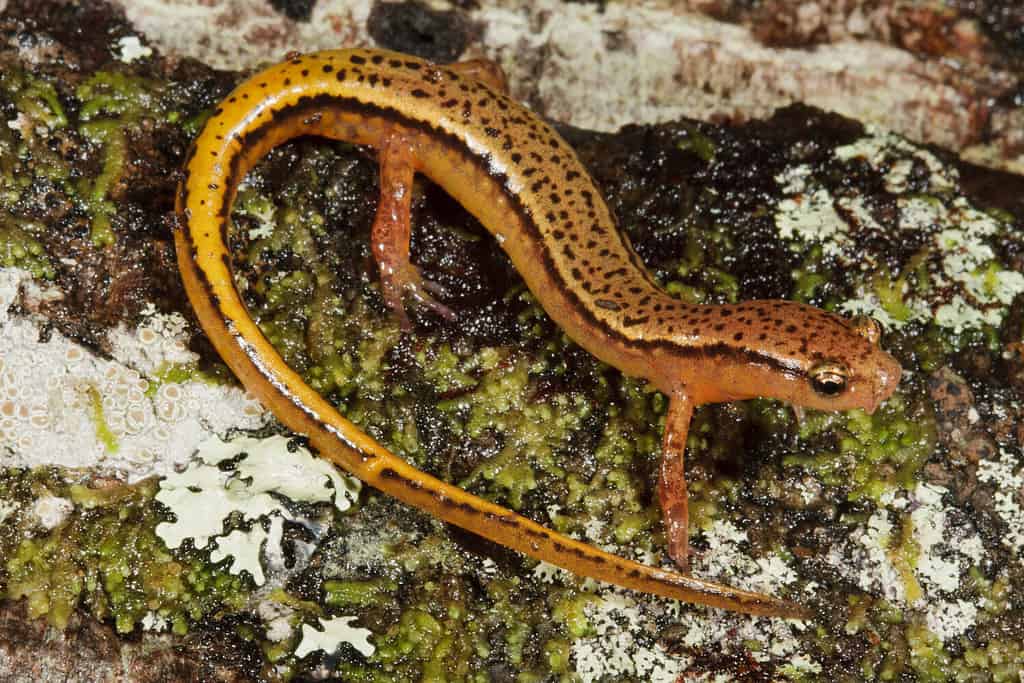
The Southern Two-lined Salamander (Eurycea cirrigera) is just one of 600 species of salamanders.
©Nathan A Shepard/Shutterstock.com
Although the order containing salamanders is the second-largest group of amphibians, the salamanders are the largest group within that order. Of the 764 species in the order, 600 of them are considered salamanders. These creatures are widely distributed throughout the world, and they can be found everywhere except in Australia and Antarctica.
These amphibians are particularly diverse in North America, a place that has the greatest number of salamander families out of any place in the world.
4. Some Salamanders Are Incredibly Resistant to Cancer

Scientists are studying salamanders to unlock the secrets of their health and longevity.
©Michael Benard/Shutterstock.com
Although legends and myths would have us believe that salamanders are made from fire or resistant to it, the truth is they are well-guarded against another killer: cancer. Studies have found that axolotls are particularly resistant to cancer.
Scientists are studying these amphibians to determine what reduces the incidence rate of cancer in them. The hope is that whatever they learn about these creatures can be applied to helping humans in some way, including anti-cancer therapies.
3. Larval Salamanders Cannibalize Other Salamanders
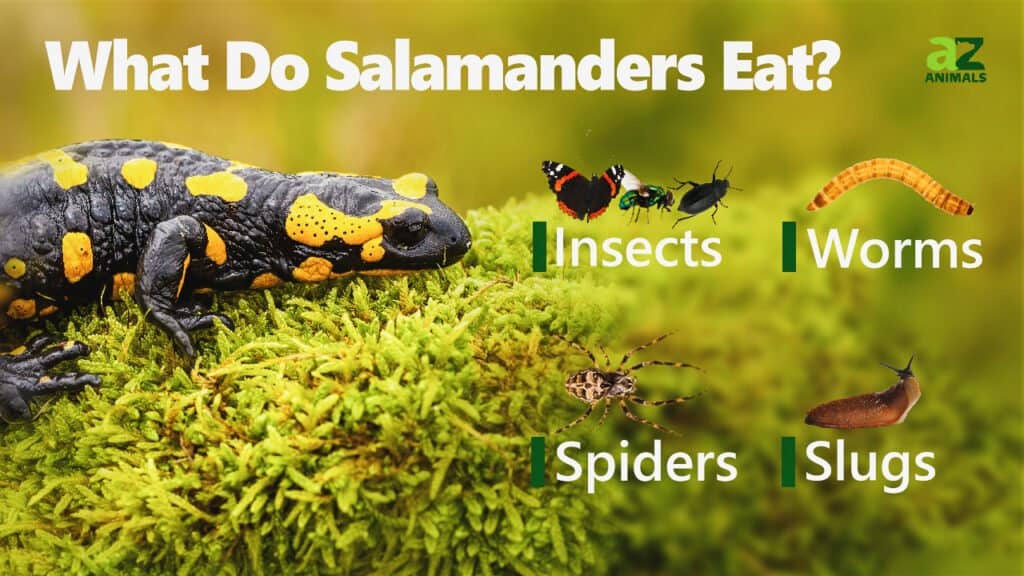
Salamanders emerge from eggs into their larval form. During that period of their lives, they spend a lot of time finding food. In some cases, they will not have to look far and will cannibalize their own kind. Several factors are believed to affect the decision to cannibalize their fellow salamanders.
For example, the presence of disease in their community and whether or not the salamander is raised with direct relatives all play a role in whether they eat other salamanders.
2. They Can Breathe Through Their Skin
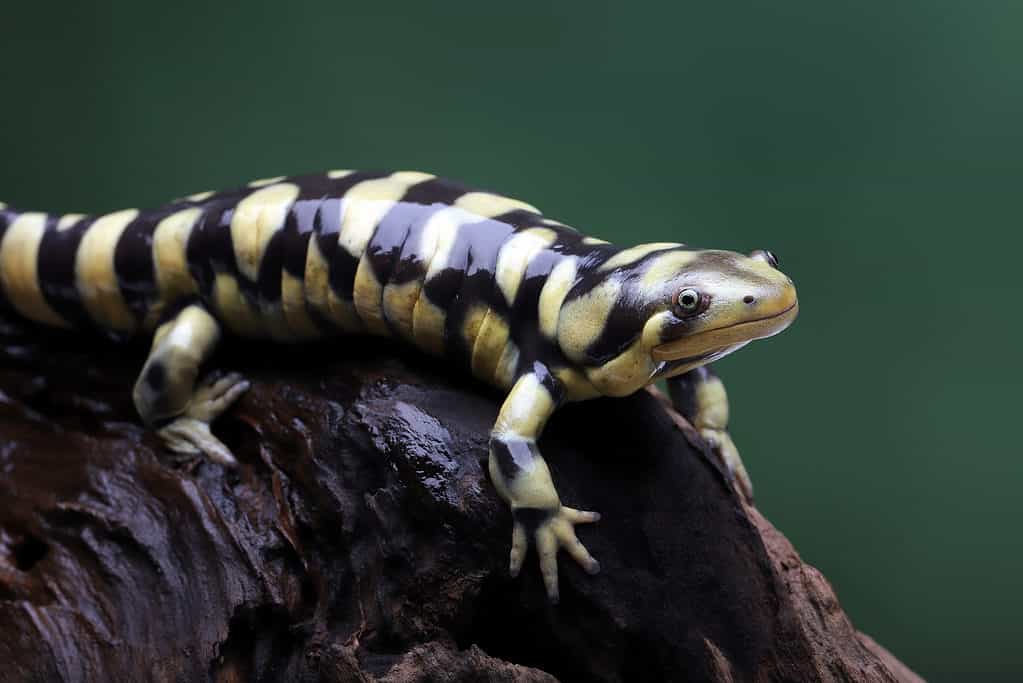
The skin of a salamander acts as a respiratory membrane, allowing them to take in oxygen underwater.
©Lauren Suryanata/Shutterstock.com
Salamanders’ skin acts as a respiratory membrane. In other words, they can take in oxygen through their skin, and this is something they do when they are underwater. That way, they can absorb oxygen directly into their systems and bypass their lung structures.
Of course, other salamanders have gills that they keep throughout their lives that enable them to breathe underwater. Either way, it’s impressive that these creatures can survive in aquatic and terrestrial environments.
1. Salamanders Can Regenerate Their Limbs and Tail
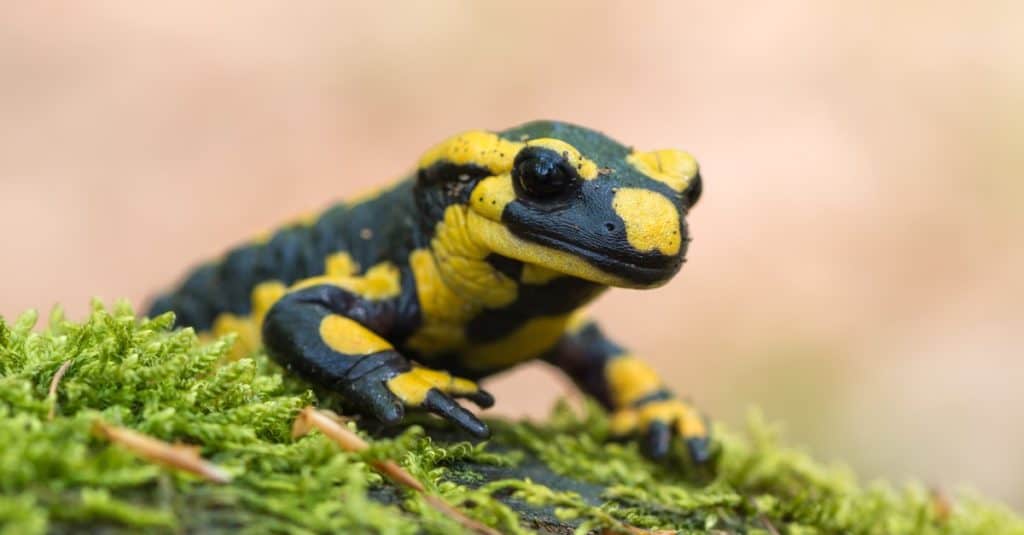
Some salamanders will regrow limbs taken by predators.
©Marek R. Swadzba/Shutterstock.com
The most interesting of all the 10 incredible salamander facts we’ve gathered is that these amphibians can regenerate their limbs and organs to an extent. If they lose a limb or have a damaged vital organ, they can regrow it. Scientists believe macrophages play an important part in helping salamanders regenerate lost body parts.
In fact, humans are still trying to learn more about this process so they can apply that information to human beings. The future of this technology could see humans recovering from injuries to the spine or brain. Sadly, it is not likely that humans will start regrowing their limbs anytime soon.
Salamanders are interesting creatures that have a lot of unique qualities. We’ve shown you 10 incredible salamander facts, but those are just the tip of the iceberg. If these facts were interesting to you, then you should consider reading more about them to learn about this diverse, widespread group of amphibians.
The photo featured at the top of this post is © Kurit afshen/Shutterstock.com
Thank you for reading! Have some feedback for us? Contact the AZ Animals editorial team.






